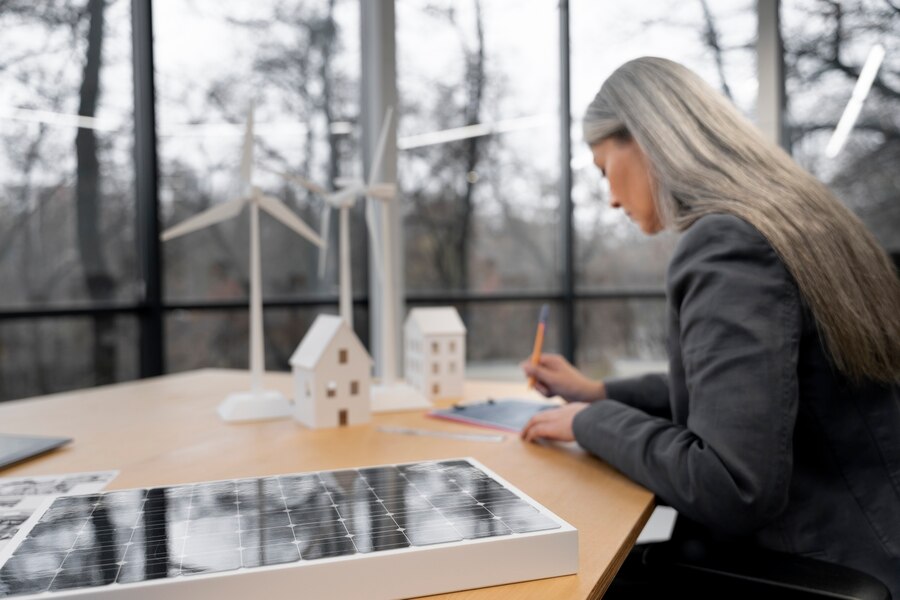Insulation is a critical component of energy efficient buildings. By reducing heat transfer between the interior and exterior environments, insulation helps maintain comfortable temperatures while lowering energy costs associated with heating and cooling.
Recent innovations in insulation technology and products are enabling new levels of thermal performance and energy savings. This article explores the science behind different types of insulation, factors that impact effectiveness, and key developments in materials and applications.
The Science of Insulation
Insulation works by resisting heat flow. Thermal energy naturally transfers from warmer to cooler areas until temperatures become equal. Insulation provides resistance to heat conduction, convection, and radiation. The rate of heat transfer depends on the insulation’s R-value. This refers to its ability to impede heat flow. The higher the R-value, the better the insulating performance.
Conduction is direct heat transfer through materials. Insulations like fiberglass batts and rigid foam boards contain millions of small pockets of air that slow heat flow through the material’s structure. Adding more insulation increases the R-value and further reduces conductive heat transfer.
Convection is heat transfer via air currents. Insulations minimize air movement by eliminating gaps where exterior and interior air can intermix. Careful air sealing maximizes insulating performance. Radiant barriers also reflect radiant heat rather than absorb it, lowering heat transfer from hot ceilings and roofs to cooler interior spaces.
Different Insulation Materials and Products
Many factors impact insulation’s effectiveness, from materials and installation to location and environmental exposures. Selecting the optimal products involves weighing benefits and drawbacks. Key choices include fiberglass, mineral wool, cellulose, rigid foam boards, spray foam, and insulated siding.
Fiberglass batts are a common choice given their affordability and ease of installation. However, batts don’t fill gaps well, requiring detailed air sealing. Blown-in fiberglass, rock wool, and cellulose insulate wall cavities thoroughly despite irregular dimensions. Respirators minimize airborne fibers when installing loose-fill insulation.
Spray polyurethane foams (SPF) excel at sealing cracks and fully adhering to surfaces. Closed-cell SPF offers a high R-value with good moisture and air resistance. However, SPF emits blowing agents that deplete stratospheric ozone until cured and must be covered to meet fire codes. Open cell and low-pressure SPF formulations help address these drawbacks.
Recent Advances in Insulation Products
Many cutting-edge insulation products aim to improve installation, durability, moisture-resistance, and sustainability. For example, aerogel blankets provide a thin profile with very high R-values using nanoparticles that minimize conduction. Spray-applied cellulose leverages recycled materials for excellent coverage of wall cavities. Hybrid insulation integrates mineral wool and foam boards to optimize properties.
Several eco-friendly insulations utilize recycled plastics, formaldehyde-free binders in batts and blows, mycelium, and cotton waste. Reflective paint-on insulations leverage radiant heat blockage. Phase change materials (PCMs) absorb and release heat during temperature swings for more consistent interior conditions. Smart insulation monitors conditions, facilitates repairs, and may dynamically adjust R-values.
Improving New and Existing Buildings
Well-insulated, tightly sealed building envelopes are imperative to meet demanding energy codes for new construction. Efficient insulation also presents a major upgrade opportunity in retrofits. Performing thorough audits helps identify areas lacking adequate insulation based on DOE climate zone guidelines. After adding insulation, verify effectiveness with thermographic scans. Continue sealing penetrations and gaps around windows, doors, pipes, and wiring to prevent thermal bridging.
Proper Installation for Maximum Performance
Achieving insulation’s full energy savings requires proper installation. Batt insulation fits tightly between wall studs without gaps, voids, or compressions. Loose-fill insulations must meet minimum settled thickness levels, which requires blown-in densities 30% above typical R-value depth coverage guidelines. Vertically installed insulation also performs far better than diagonally placed batts that leave thermal bridging gaps.
Insulating roofs, ceilings, and floors follows similar best practices geared towards high coverage rates, consistent depths, and thermal boundary continuity. Staggering joints between rigid foam panels avoids thermal bridging to adjacent floors. Effectively insulating rim joists in crawl spaces and foundation walls enclosing basements maintains building envelope completeness. Attics require ample venting to remove moisture while preventing wind washing that erodes insulation performance.
Many factors impact achievable insulation R-values and work against ideal conditions assumed in laboratory testing. But following manufacturer specifications tailored for each insulation type while sealing air gaps can minimize these installation and placement variables. Thermographic scans help discover flaws permitting excessive heat transfer for rectification. Home energy audits also emphasize inspection around penetration points with plumbing, vents, lighting, and wiring. Careful detailing prevents costly conduction losses.
Emerging Technologies for Smart Insulation
Several promising technologies aim to advance insulation materials towards dynamic capabilities, better occupant controls, and automated responses. Smart insulation options fall into active and passive categories with basic to sophisticated functionalities.
Passive technologies leverage microencapsulated phase change materials to improve thermal mass storage and interior comfort. These micro-PCMs absorb or release heat based on ambient temperatures without requiring sensors or wires. Reflective particulates integrated into insulation layers actively resist radiative heat transfer when temperatures spike.
More complex active technologies allow real-time insulation adjustments and perimeter zoning. Microprocessors, circuits, and sensors enable capabilities from simple leakage monitoring to modulating insulation levels based on interior and exterior conditions. Early research also examines integrating tiny compressors to alter rigid foam panel densities. These smart insulation advancements especially benefit zero energy buildings and net zero housing.
While still largely conceptual, smart dynamic insulation could significantly advance thermal envelopes beyond today’s static physical thermal barriers. Added insulation functionalities would better respond to solar loads, occupancy levels, HVAC zones, weather fluctuations, aging effects, and air infiltration over time. The next generation of intelligent building insulation promises to take current high-performance materials into new realms of energy-optimizing capabilities.
Final Words
Recent insulation materials provide more consistent coverage, higher R-values, and minimized air leakage. Synergies with air sealing and HVAC equipment further boost performance. In both new builds and weatherization programs, properly installing optimal insulation improves occupant comfort, building durability, and energy efficiency. Continued innovation around sustainable materials and smart capabilities will further advance insulation’s vital role in green buildings.
